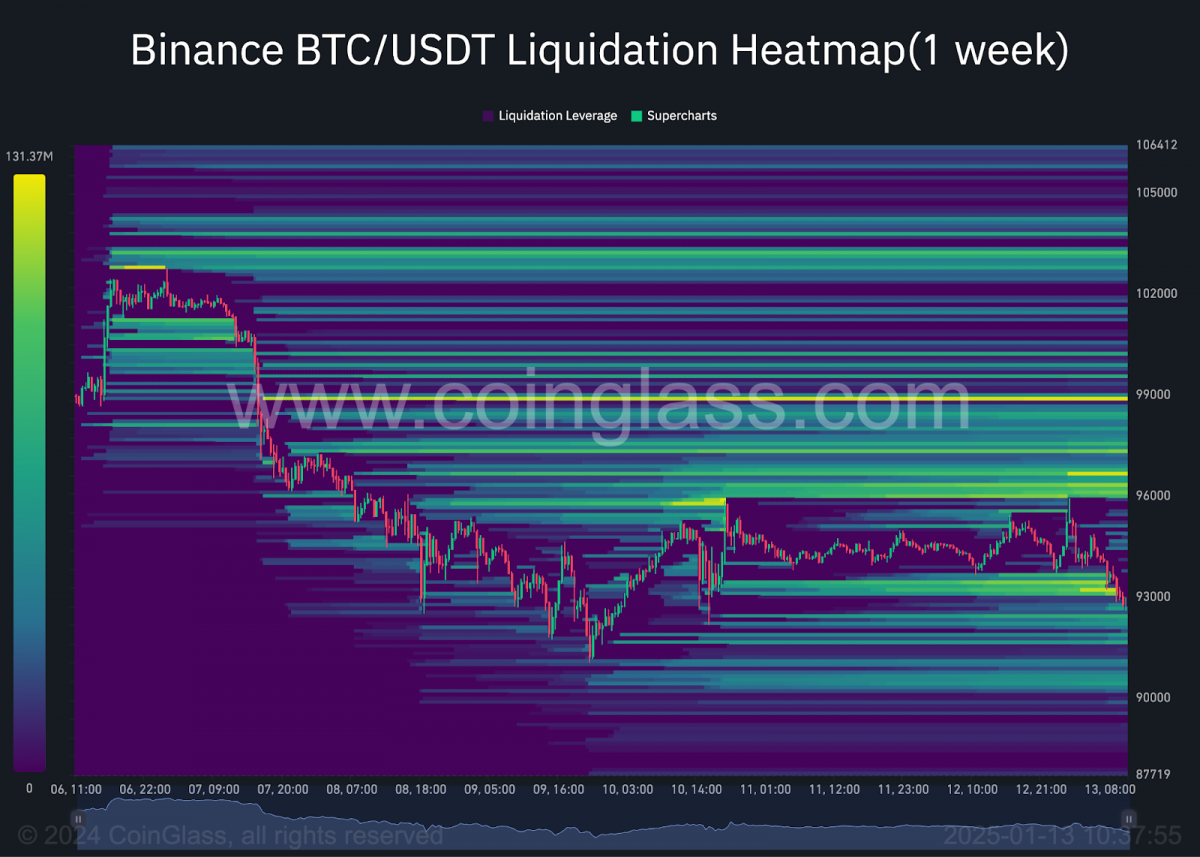Experts Share Insights on January Price Dips of Bitcoin and What They Could Mean for Future Growth
In Brief
The fluctuation in Bitcoin's price during January, especially in the aftermath of halving events, has become a point of interest, driving further exploration into the antecedents and impacts of such downturns.

Market analysts and participants have been extensively discussing Bitcoin's behavior in January, particularly notable in the years following halving events. Historical patterns reveal that significant price drops are quite common during this period, with previous cycles showing similar behaviors. This repetitive trend inspires a closer look at the underlying reasons and effects of declines following halving events.
Understanding the January Downturns and Bitcoin Halving Events
During Bitcoin halving events, which occur approximately every four years, the reward for mining new blocks is halved. This mechanism aims to control inflation and maintain scarcity, often leading to price surges in the months or years that follow. Nevertheless, historically, drastic shifts in Bitcoin's price frequently occur shortly after a halving, particularly in January.
Following the halving in 2020, Bitcoin experienced a sharp decline in January 2021, dropping over 25% from more than $40,000 down to approximately $30,000 by the end of the month. Yet, Bitcoin made a remarkable recovery after this dip, soaring 130% from its January low to achieve an unprecedented high of $69,000 by November.
Similarly, in January 2017, which followed the 2016 halving, Bitcoin saw a 30% decrease in value. After a drop from $1,130 to $784, the cryptocurrency embarked on an impressive rally, skyrocketing 2,400% to hit a record high of $20,000 by December of that year.
Another Year Post-Halving, Another Dip
As we look at January 2025, Bitcoin's price movement appears to align with historical trends. After reaching a peak of $102,300 on January 7, Bitcoin faced a 10% drop, falling to around $92,000. While this correction is consistent with past behaviors seen in years following halvings, it does not reach the extremes experienced in January 2017 or 2021.

Photo: CoinGecko
As cryptocurrency analyst Axel Bitblaze highlighted, 'January has historically seen Bitcoin sell-offs in post-halving years.' His observations indicate that the market operates in cycles and suggests the likelihood of a rebound similar to those from past years.
Let’s delve into the Factors Behind January's Price Corrections
The downturns in Bitcoin's price during January result from a variety of factors, especially in post-halving years. One significant influence is profit-taking by investors. Those who purchased Bitcoin at lower prices may decide to liquidate some of their holdings in January, coinciding with the end of the holiday season and the start of a new fiscal year, thus applying downward pressure on the market.
The behavior of prices during this time is also shaped by market sentiment and uncertainty. The broader economic landscape, shifts in regulations, and prevailing market trends continually affect the cryptocurrency market. An uptick in uncertainty as investors reassess their positions may contribute to the declines seen in January.
Furthermore, the dynamics of liquidity can amplify these patterns. At the beginning of the year, shifts in liquidity often occur as both institutional and retail investors adjust their portfolios. This reallocation of capital can create temporary disruptions within the market.

Photo: CoinGlass
Another aspect to consider is the cyclical nature of the cryptocurrency market. Historical analyses suggest that a mix of supply, demand, and market psychology tends to trigger corrections in years following halvings. Although these adjustments can be unsettling for some, they often pave the way for subsequent rallies.
The Opinions of Analysts
Market analysts and keen observers have given their take on Bitcoin's decline in January, shedding light on its significance and the potential implications for the upcoming year. YouTuber and analyst Crypto Rover pointed out that Bitcoin has consistently dipped during the initial days of January, stating that the current decline is not as intense as previous corrections, which implies it may not signal a lasting bearish trend.
Meanwhile, the Stockmoney Lizards account highlighted the broader context of Bitcoin's market cycles, suggesting, 'Bitcoin has NOT hit the ultimate hype or pump phase,' indicating there remains considerable room for growth in the current cycle. They pointed to the emergence of exchange-traded funds, widespread adoption, and supportive governmental regulations as potential catalysts for future price increases.
Examining Market and Macroeconomic Influences
Bitcoin's price movements are deeply interconnected with broader market dynamics and macroeconomic conditions, particularly in post-halving years. Factors such as interest rates and inflation play pivotal roles. Bitcoin's appeal has surged recently, often branded as a hedge against inflation. However, fluctuations in monetary policy and interest rates can affect investor morale and the appetite for risk-prone assets like Bitcoin.
A key element shaping market dynamics is the ever-evolving regulatory landscape surrounding cryptocurrencies. Developments in pro-crypto legislation and institutional adoption can boost market confidence, while regulatory crackdowns may introduce hurdles. Moreover, advancements in technology or increased adoption of the Lightning Network can significantly influence long-term price movements and enhance functionality within the Bitcoin ecosystem.
Possible Bitcoin Scenario in 2025
Historically, there is potential for considerable profits as the cycle progresses. By the end of 2025, Bitcoin could soar beyond $150,000-200,000 if it follows a recovery pattern reminiscent of 2021 when it surged by 130% from its January lows. This optimistic perspective hinges on continued institutional acceptance, favorable macroeconomic conditions, and the growing viability of Bitcoin as a medium for transactions and a store of value.
Conversely, a more cautious outlook considers the very real possibility of additional corrections. Should there be a downturn akin to what was observed in January 2017 or 2021, prices may dip below $70,000 before any recovery takes place. These potential scenarios illustrate the range of outcomes that could unfold throughout the year.
Disclaimer
In line with the Trust Project guidelines As a final note, the information presented on this page should not be considered legal, tax, investment, financial, or any type of professional advice. It is essential to only invest what you can afford to lose and to seek independent financial guidance if you're unsure. For more details, we recommend checking the terms of service alongside the support materials provided by the issuer or advertiser. MetaversePost strives to deliver accurate and impartial reporting, but market conditions are subject to shift without prior notice.







